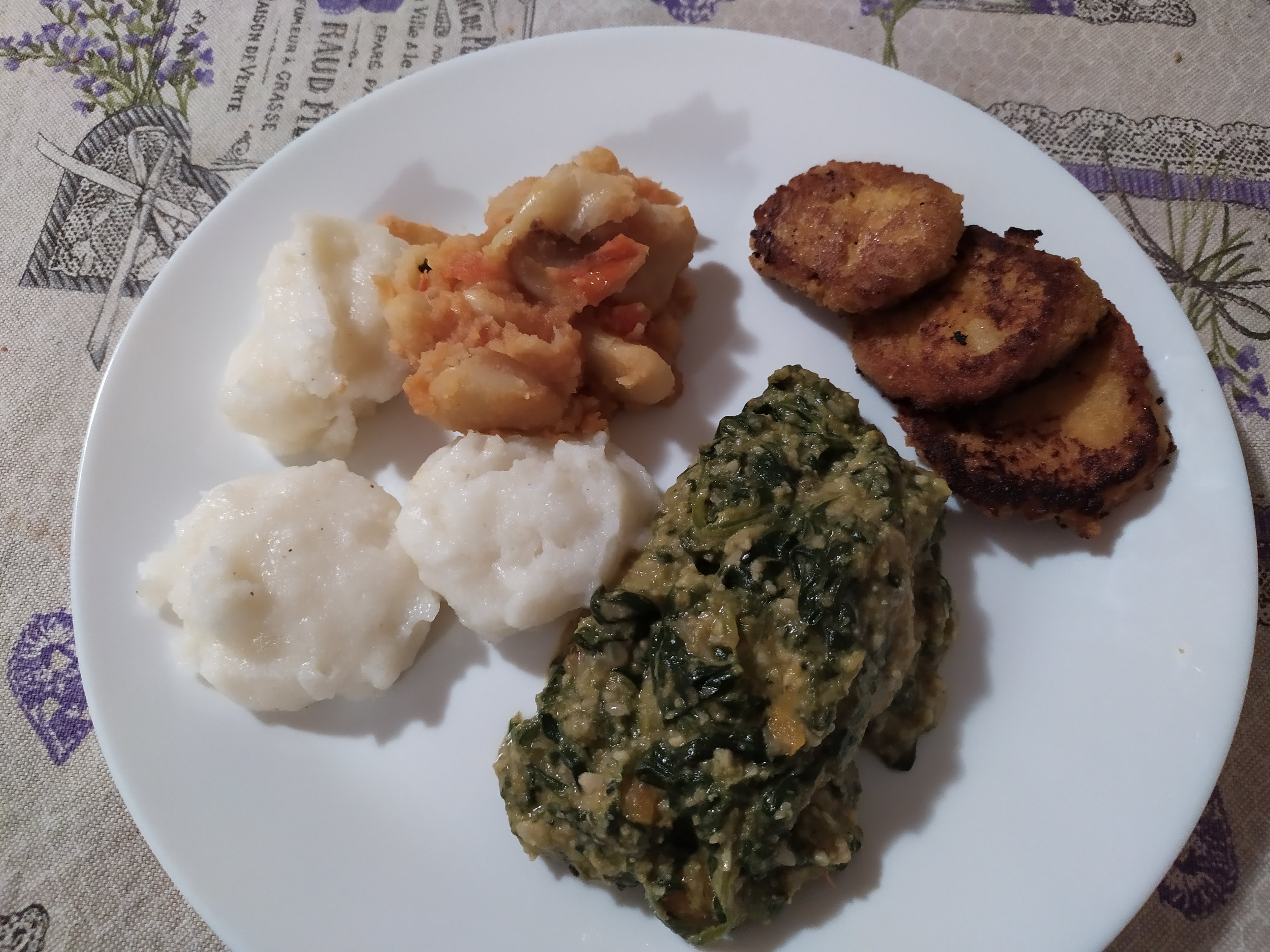This week’s protagonist: Zambia!
Our journey across the world continues, this week with Zambia!
We were surprised by the large amount of typical recipes that we could actually find, most of them were about the main foods such as Nshima and Ifisashi, but we even found a whole blog about Zambian and Nigerian cuisine!
So overall we had plenty of choices, but we noticed immediately that if it weren’t for the perhaps sometimes strange choices of meats (vertebrae, insects or worms), all recipes had in common very simple and earthy ingredients, such as potatoes, roots, nuts, and beans.
The “Meal” ingredient
In Zambia you only have snacks or filler meals until you eat Nshima, the actual preparation that tells you you had lunch. This is fascinating as the meal itself is very lack-luster, but such ideologies are seen all over the world: rice in South-America and Asia, tortillas in Mexico, bread/pasta in the Mediterranean region.
Nshima is a thick paste of water, salt and (white corn) cornmeal, cooked until thickened and served in a traditional, spoon-shaped form on the plate. Interestingly enough, this was very familiar to me, as in Veneto (north-eastern region in Italy) we eat “polenta” very often, and it’s basically the same preparation but with yellow corn flour, while in Latin America they often eat corn-based patties called “arepas”, which again are very similar!
Green, healthy and tasty!
So of course we had to combine Nshima with something else, and once again we opted to stick with vegetarian recipes since there were plenty available!
We made a full meal course! First on the list, Nshima: it was very simple, and we didn’t even have to go out to get the flour because, as mentioned we often use it already to make white arepas!

To accompany it, we made another vegetarian classic from Zambian cuisine: Ifisashi: a sort of collection of many green (you wouldn’t normally eat), such as carrot and pumpkin leaves and other less-known plants cooked together with more goodness. For our version of the Ifisashi, we simply used some left-over cabbage and plenty of spinach leaves, it did the job quite well! The trick is to cook onion and tomato first, add some ground nuts, then add all the green and finish with the rest of the ground nuts. Leave it to cook for at least 20-30 minutes until it’s not soggy, and it’s ready!
I have to say that it sounded a bit boring at first, but it was definitely the star of the composition! The leaves acquire a special taste after some time cooking (not like we usually eat the spinach, blanching them for only a few minutes) and the nuts gave the whole dish a pasty and satisfying consistency. In some recipes we found around we also saw they added some extras to the mix, so we added little butternut squash to ours!
Beans and dessert
We also cooked some basic white beans (broad and butter beans) in garlic, onion and tomato that came out a little too salty but still well-complementing the rest of the dish. This was a quite common preparation and there wasn’t anything too surprising with the final outcome.
With dessert however, we were mind-blown! Again, a relatively simple pancake-like preparation of coconut milk, cinnamon, and sweet potatoes, gave an excellent earthy and not-too-sweet dessert that warmed our hearth! In ours since we didn’t have enough potatoes we opted to add the rest of the butternut squash, and it went perfectly!
Conclusions
Overall, we were impressed with the simplicity and yet the clear effort and attention for cooking and eating that came across Zambia’s culture. The dishes were nothing super strange or exotic to us, and yet they had something unique and different from anything we tried before! A clear winner for a simple and vegetarian meal with friends :)
Leave a comment